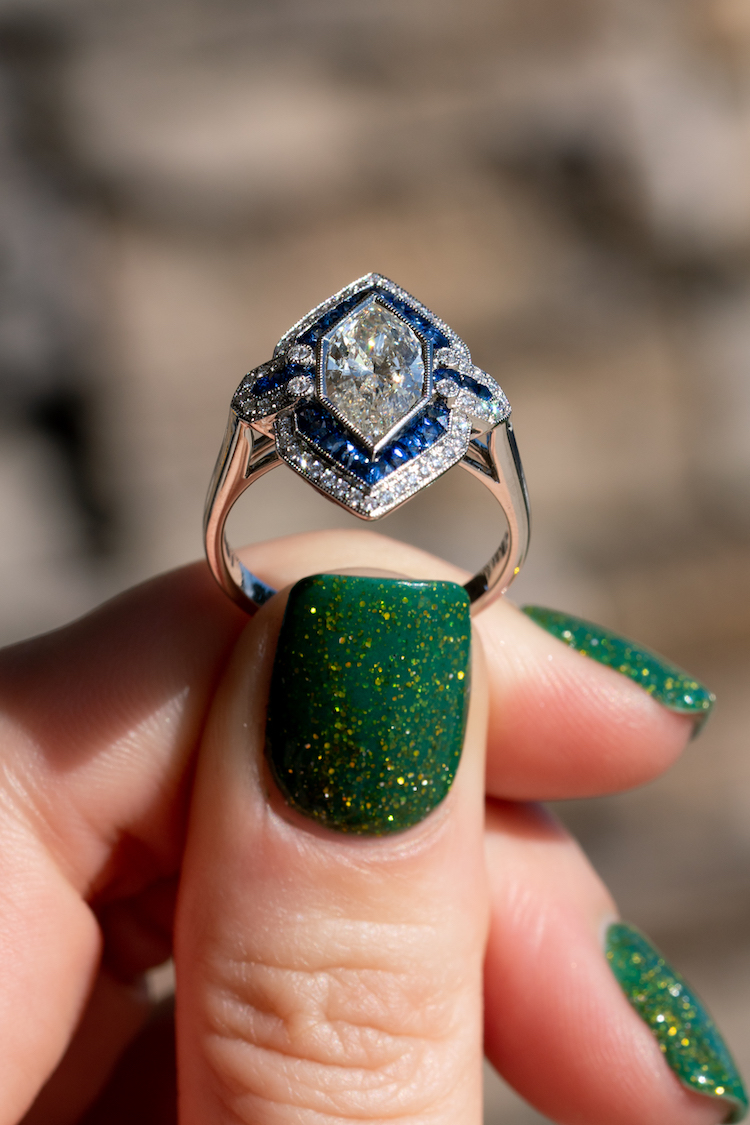Colorful Precious Gemstone & Diamond Rings: Sapphire, Ruby, and Emerald
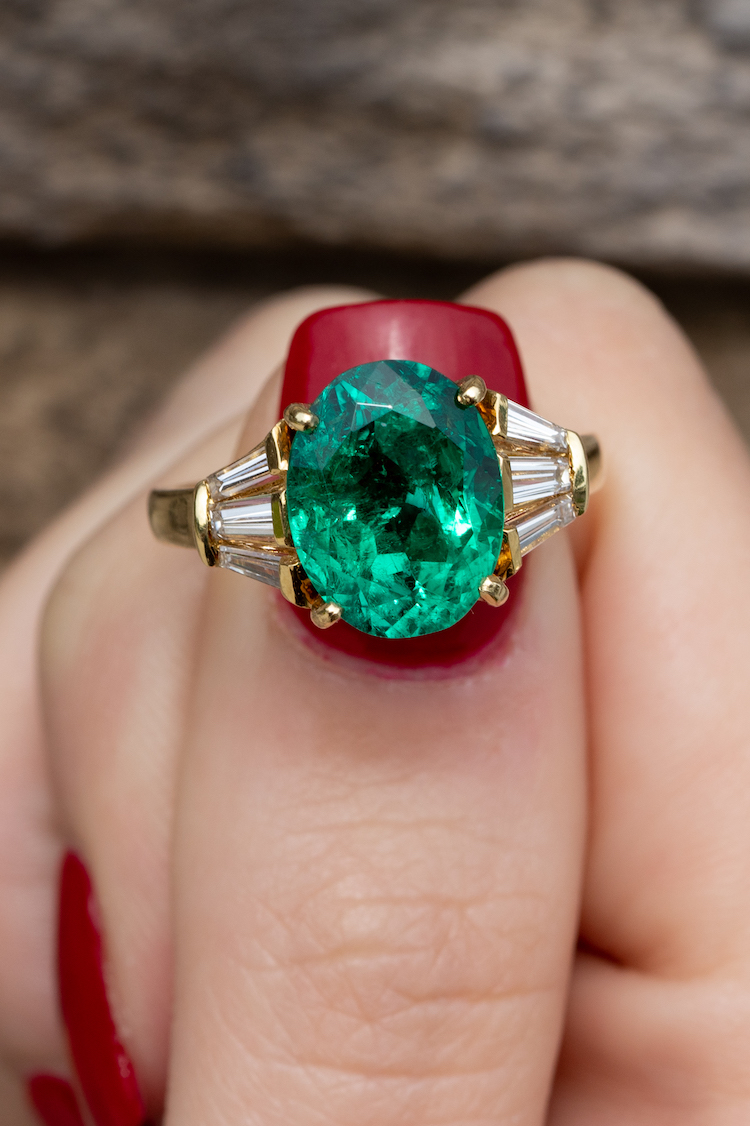
While diamond rings are absolutely breathtaking and magnificent, there is nothing like a diamond ring with colorful precious gemstones…or, better yet, a colorful precious gemstone ring with diamonds! The combination of colorful precious gemstones – sapphires, emeralds or rubies – with diamonds is unbeatable and incomparable. The contrast between the white diamonds and the colorful gemstones is extremely powerful. It’s like diamonds and The Big Three Gemstones (Ruby, Sapphire, Emerald) were meant for each other. When pairing the two, you have the richest, most beautiful look in all of jewelry.
In this gemstone ring feature, we will be discussing everything you need to know about sapphires, rubies and emeralds, while providing you examples of the most exquisite colorful precious gemstone & diamonds rings available at Diamonds By Raymond Lee and Raymond Lee Jewelers in Boca Raton, many of which are vintage and Art Deco style!
If you appreciate sapphires, rubies and/or emeralds like we do, you are going to love what we have in store for you…
SAPPHIRES
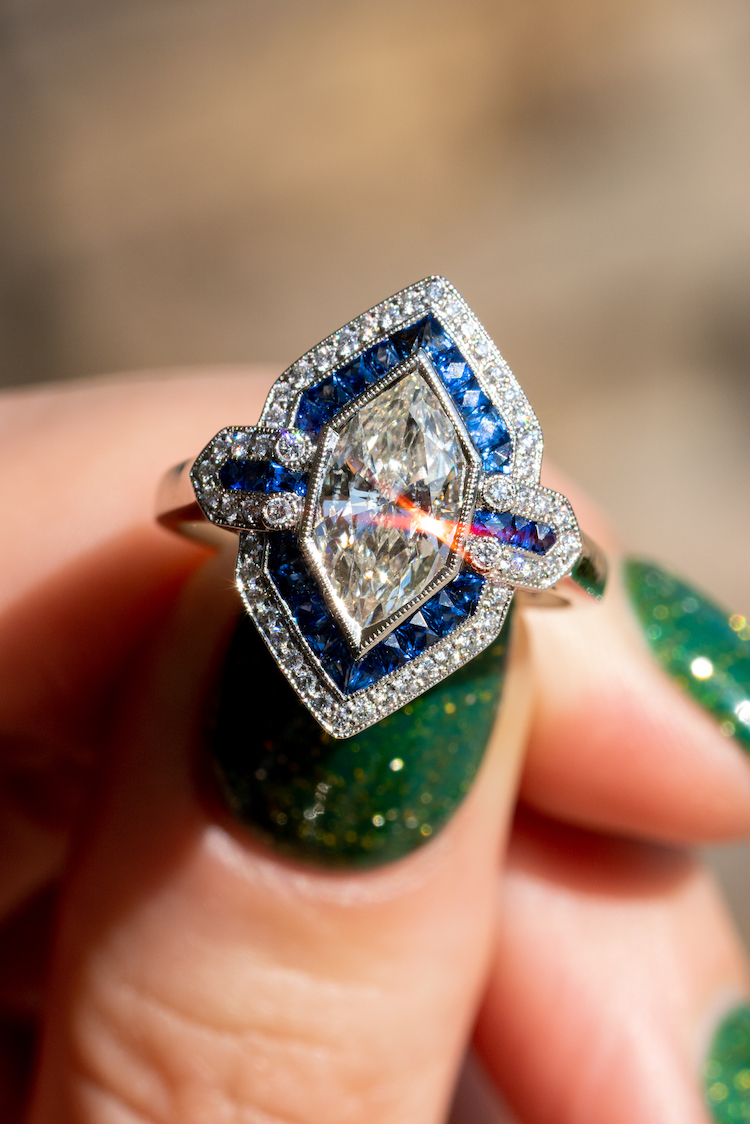
A sapphire is a precious gemstone. It is a variety of the mineral corundum, which is a crystalline form of aluminum oxide that often contains trace elements of iron, titanium, vanadium, and chromium. Corundums are one of the hardest natural minerals, only second to diamonds.
Corundums form in all different kinds of colors, such as blue, yellow, orange, green, pink, purple, white, and red. Besides red, all the other colors of corundum, including colorless corundums, are sapphires. Red corundums are rubies.
While all the different colors of corundums, aka sapphires, are highly sought, blue sapphires are the most popular and well known.
Blue sapphires get their beautiful intense blue color from impurities in the form of iron and titanium.
Pink sapphires, which are also extremely coveted and valuable, contain traces (or, in other words, impurities) of iron, titanium, magnesium, copper and chromium, with more chromium leading to a deeper pink.
Gem-quality blue sapphires are very hard and brilliant, which makes them perfect for jewelry. Unlike softer semi-precious gemstones, blue sapphires can be worn everyday, as can diamonds, because they are extremely durable.
Where are blue sapphires found?
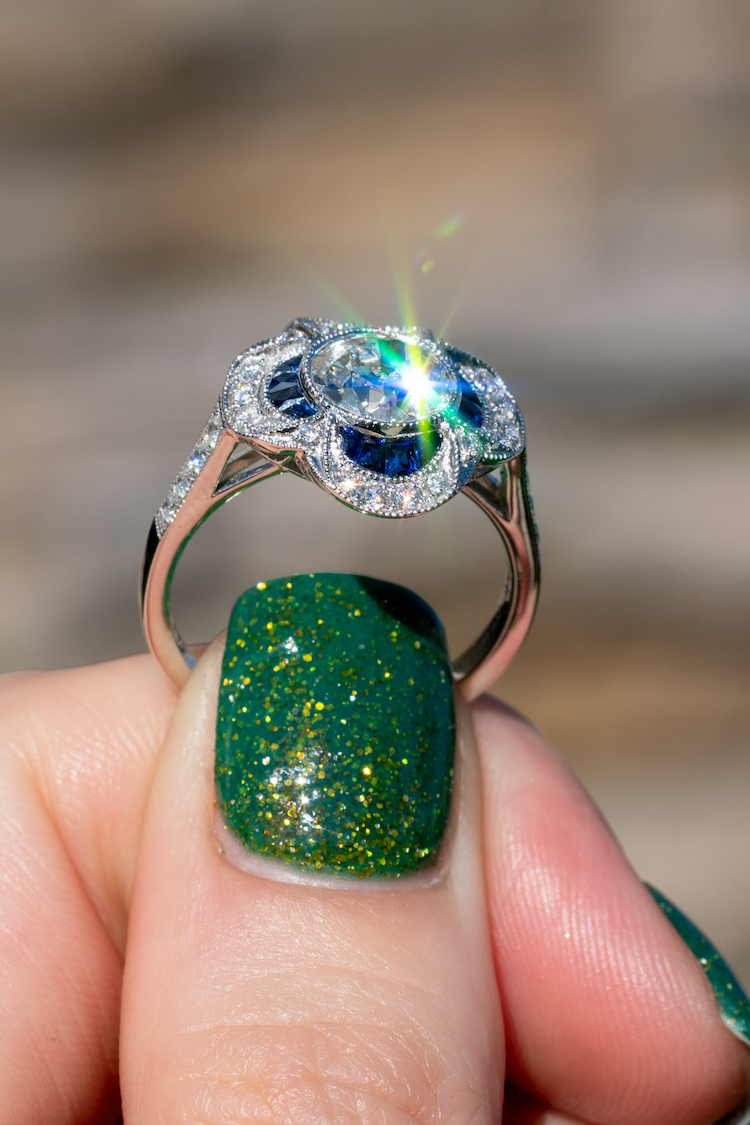
Blue sapphires develop under immense heat and pressure deep in the earth’s crust. This process began over 150 million years ago. So, all natural sapphires are incredibly old.
There are blue sapphire deposits at a number of locations around the world, which include Kashmir, Myanmar, Thailand, Australia, Madagascar, Tanzania, Nigeria, and Montana in the US.
Sri Lanka is said to be one of the oldest sources of sapphires, dating back to 600-275 BC. This means sapphires have been around for thousands of years. From the very beginning, they’ve held a special place in human civilization.
Blue Sapphire History
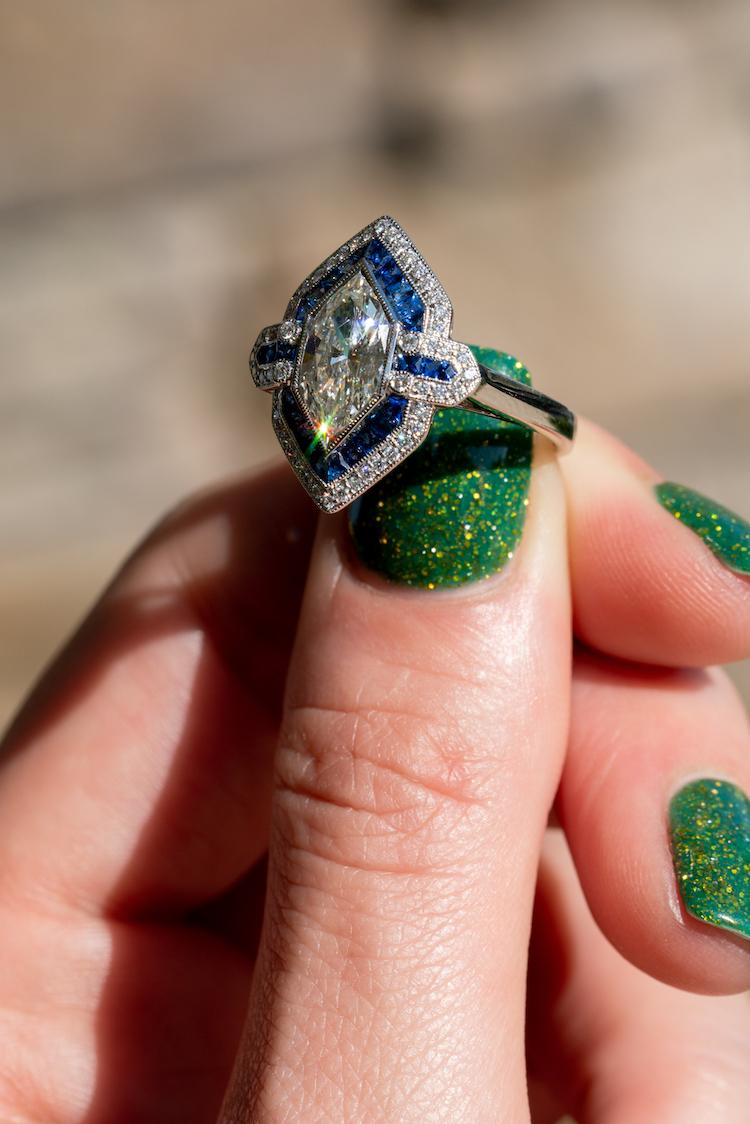
Blue sapphires have been treasured as one of the most precious gemstones for thousands of years. Kings and queens of ancient Rome and Greece believed that blue sapphires would protect them from envy and harm. Ancient Persians thought the earth rested on a giant sapphire that reflected its color into the sky. Many cultures throughout history took the blue sapphire to represent the heavens. Sapphires appear frequently in the Bible.
Even Buddhism holds the sapphire in the highest regard, giving credence to its ability to bring calmness and spiritual enlightenment.
To this day, people greatly prize the blue sapphire for its beauty, rarity, hardness, and symbolism, which many believe to be wisdom, virtue, good fortune, and holiness for Royals…yes, sapphires are still the ‘stone of royalty’.
Sapphire Value
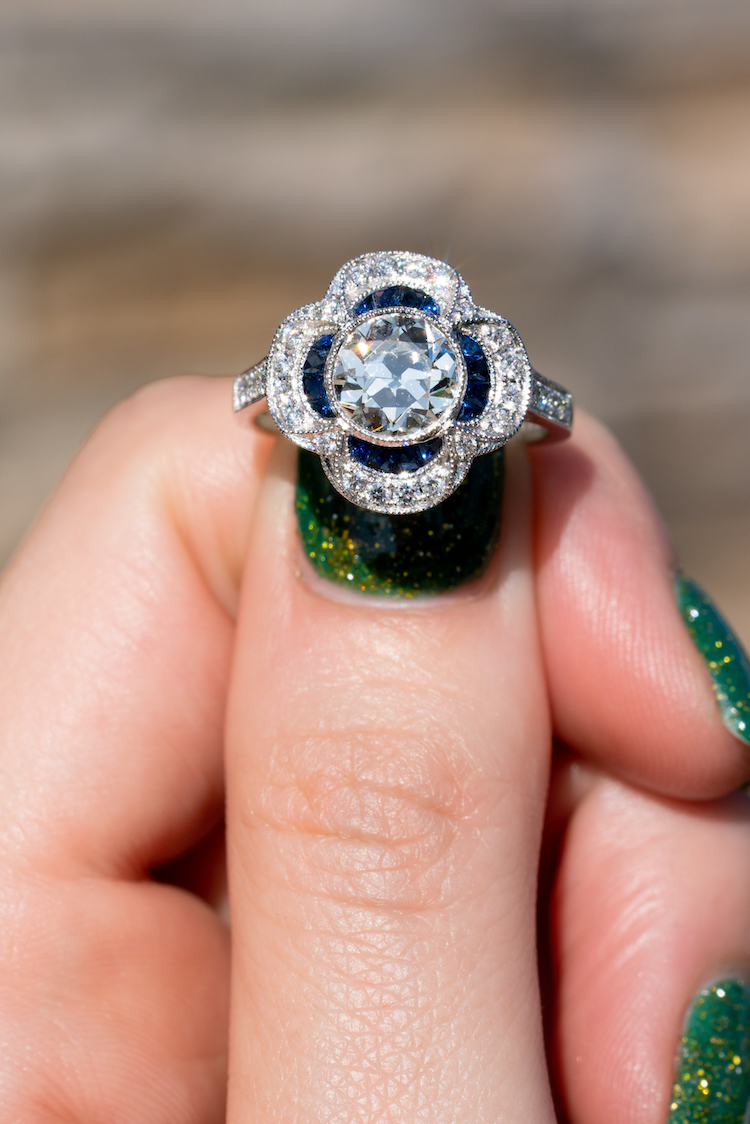
Blue sapphires are they rarest and most valuable of all blue colored gems. In fact, they are among the most valuable of all gemstones in general, with investment-grade sapphires rising in value year-after-year for the last couple of decades. Sapphires are more popular than ever, which is a difficult concept to understand since they have always been incredibly desirable.
Gem-quality blue sapphires are valued based on color (the most important factor), which includes hue, tone, and saturation, as well as clarity, cut, and carat weight. As such, sapphires have a 4C’s grading system similar to diamonds.
When comparing sapphires to diamonds, carat for carat, sapphires are usually cheaper than diamonds. Because most jewelers use larger sapphires for rings than they do diamonds, prices for sapphire rings and diamonds rings are very similar. However, when it comes to rings that incorporate sapphires, the vast majority will also include diamonds, as the two precious gemstones complement each other in a majestic way. The blue and white gemstones provide incredible contrast in color, with the blue sapphire displaying luster and the white diamonds providing brilliance and clarity. What’s more, both gemstones are extremely hardy and durable, making them ideal for everyday wear.
All in all, sapphires and diamonds together in a ring is truly the perfect combination, as you are about to see…
Sapphire Rings with Diamond Side Stones
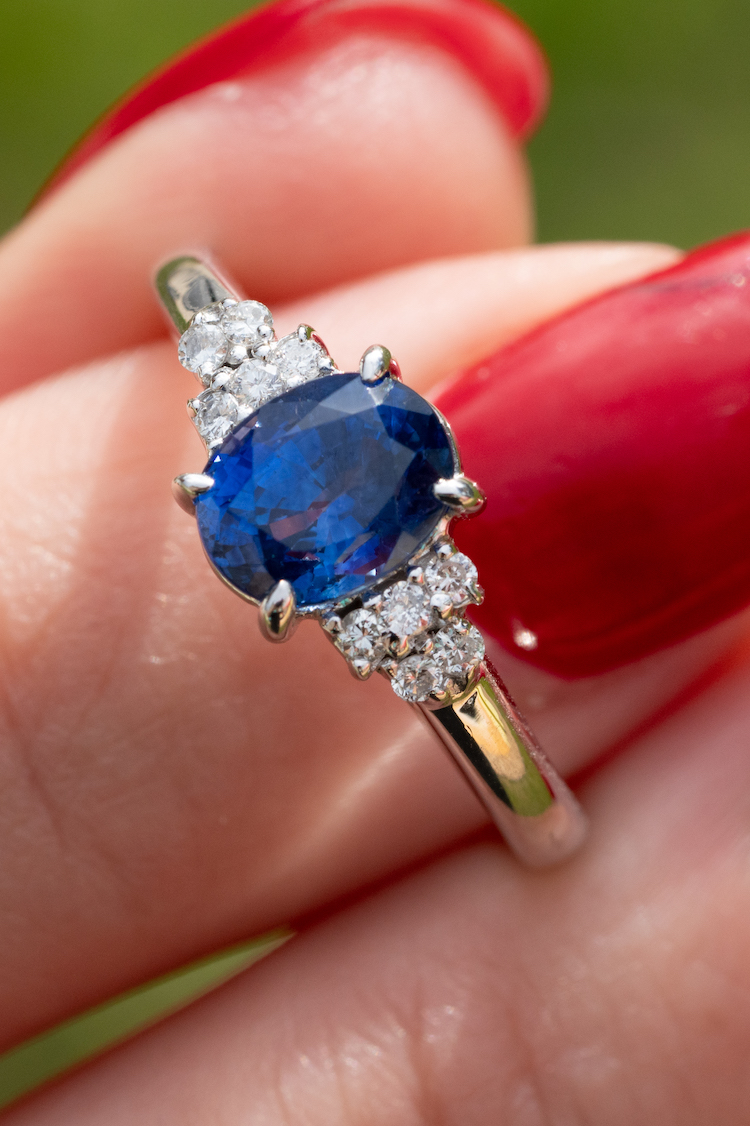
This is a stunning oval sapphire ring with diamond side stones on a plain, lustrous yellow gold band. The diamond side stones make the blue sapphire pop while also providing added brilliance and fire.
Diamond Rings with Sapphire Side Stones
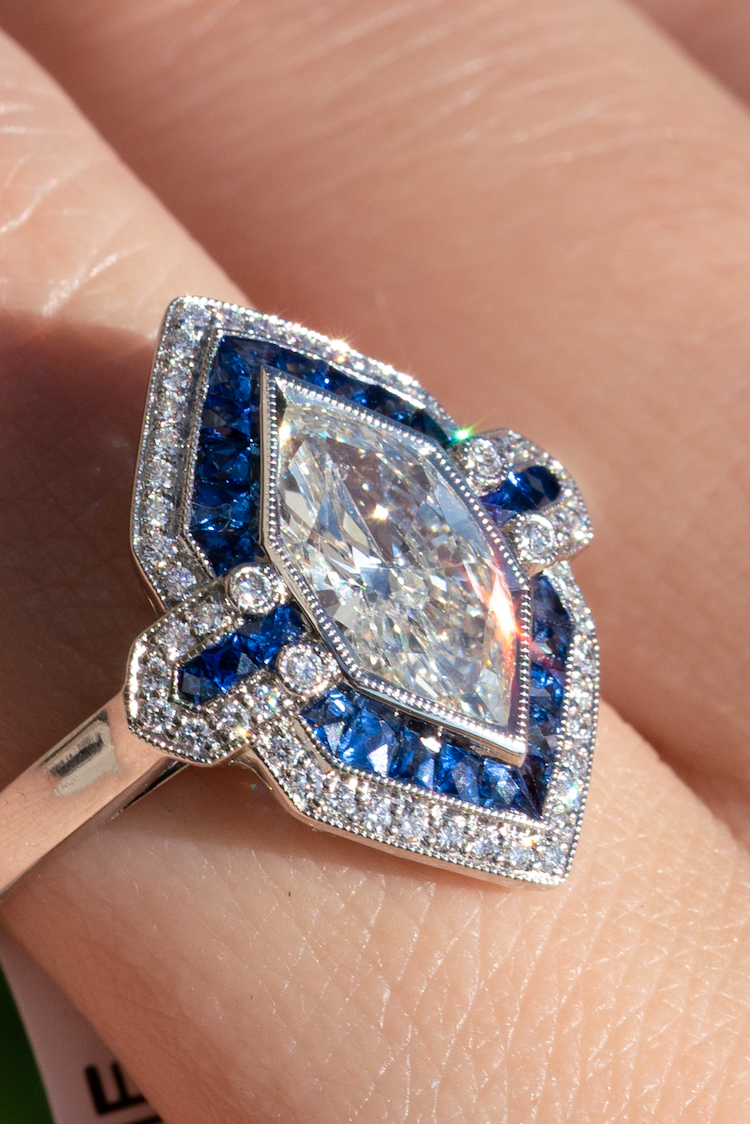
This is an absolutely gorgeous Art Deco style diamond ring with sapphire accent stones. And while the diamonds make up the bulk of this stones carat weight, the vividly intense blue color juxtaposed between the white diamonds gives the sapphires a very strong presence, thus making them the main attraction.
This is another Art Deco style ring with a flower motif. This one puts a little less emphasis on the blue sapphires, but their presence makes for a powerfully rich statement nonetheless.
All of the sapphire & diamond rings in this feature are available for sale at Diamonds By Raymond Lee. However, not all are listed on our website. Please contact us for pricing and any questions you may have.
RUBIES
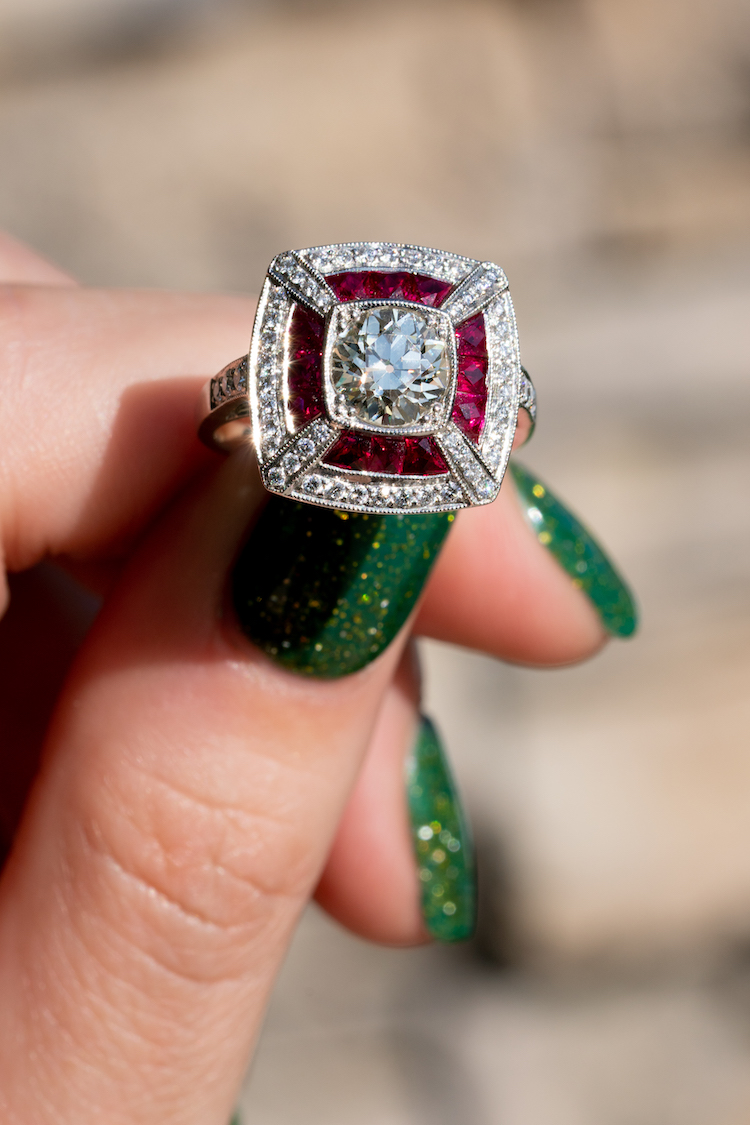
Rubies are another variety of the mineral corundum, except they are red. Only red corundums are considered rubies. They get their color from trace elements of chromium, which occur in the perfect amounts. This impurity of chromium can create rubies ranging from orange-red to purplish red, with pure blood-color red rubies being the most valuable and sought after.
Where are Rubies found?
Like sapphires (which are, of course, the same mineral as rubies), rubies were formed deep in the earth’s crust millions and millions of years ago.
Rubies are mined in Thailand, Cambodia, Vietnam, Afghanistan, Australia, Brazil, Colombia, India, Japan, Scotland, and Madgascar, among other countries. However, Myanmar has been the main source of rubies for hundreds of years. So, when a new deposit of rubies is found, it makes a huge wave in the industry.
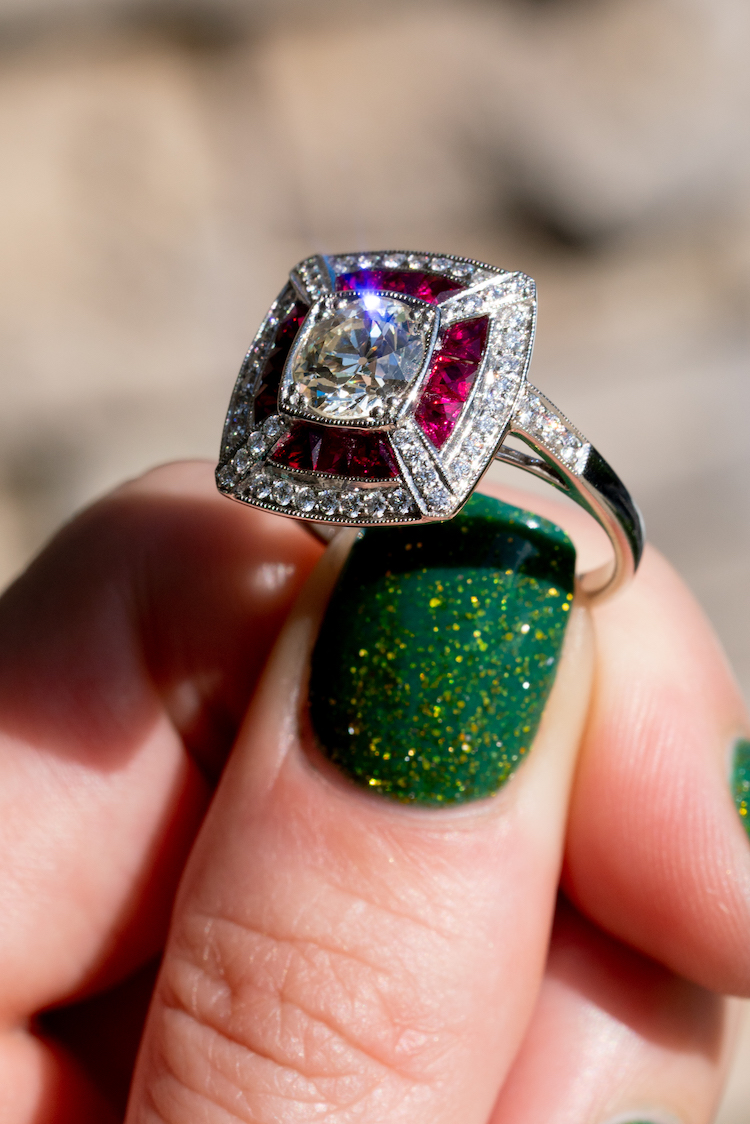
Ruby History
Rubies have been deeply cherished for as long as sapphires too. The ruby was mentioned in ancient Sanskrit scriptures, where it was referred to as the king of precious stones. The idea of the ruby being the ‘king of gemstones’ can be seen throughout history in many different civilizations. Unsurprisingly, rubies have always symbolized power and wealth, as they still do to this day. After all, red is the most powerful and extreme color.
The ruby has also been prized as the stone of soldiers. Ancient Burmese would give their soldiers rubies as they believed it bestowed invulnerability. The fact that the ruby’s color is strongly associated with blood is probably the reasoning behind this.
All in all, ruby lore often links rubies to good health, wealth, and power. People of the modern day still get this feeling when holding or wearing a ruby. There is something powerful about it. Rubies give off a sense of vigor and vitality. It must be a mix of the beauty, the history, and simply knowing the value of a ruby.
Rubies Value
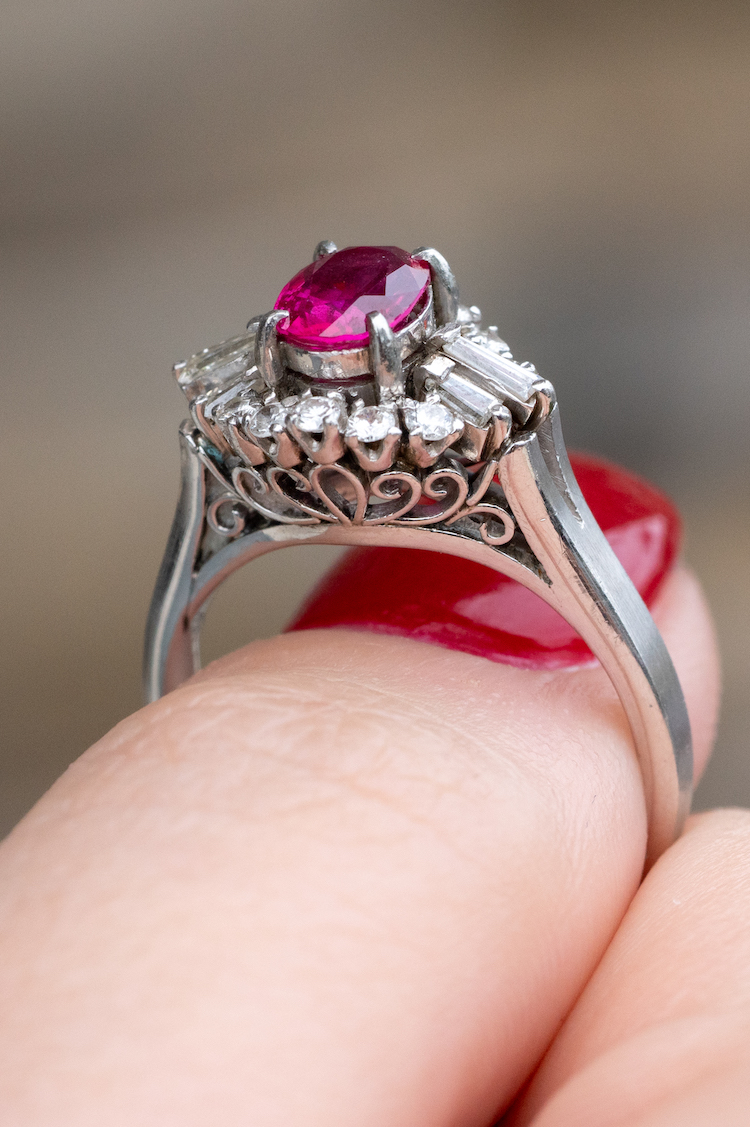
Rubies have a wide price range. So, it can be a few hundred dollars per carat up to a million dollars per carat. Some rubies command super high prices because of how exquisite they are. However, generally speaking, most rubies will be less expensive than diamonds of the same size.
Comparing to sapphires, rubies typically fetch higher prices because they are rarer than sapphires, especially in the 1-3 carat range. While, gem quality sapphires between 1-3 carats are special and very valuable, they are not exactly uncommon. Conversely, a ruby of 2 carats and up is already beyond rare.
The value of a ruby comes down to color, clarity, cut, and carat weight.
Like sapphires, its important to find out if a ruby has been treated or not, which a GIA certificate will state. Treated rubies are obviously less expensive, as their beauty and quality is amplified and improved upon from the treatment. There are different kinds of treatments, but heat treatment is the most common and not such a deterring factor when buying a ruby. Of course, it will still affect the price.
Note: Most rubies and sapphires in the jewelry market have heat treatment, which is a big reason why they are typically less pricey than diamond jewelry.
Ruby Rings with Diamond Side Stones
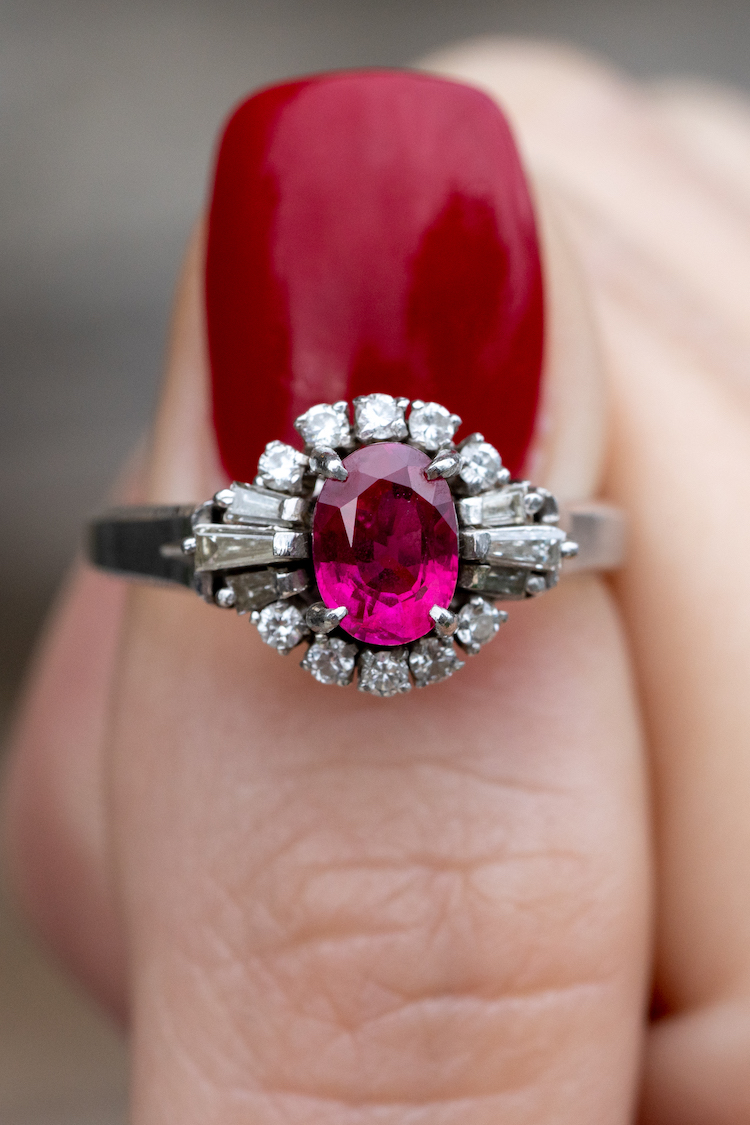
This is a gorgeous vintage style ruby ring with diamond accent stones. The stunning, natural oval ruby is surrounded by round brilliants at the top and bottom and baguette diamonds of different sizes at the sides. Altogether, the design makes the ruby pop magnificently and it gives the ring a much larger appearance. This ring will take up a lot of finger real estate.
Diamond Rings with Ruby Side Stones
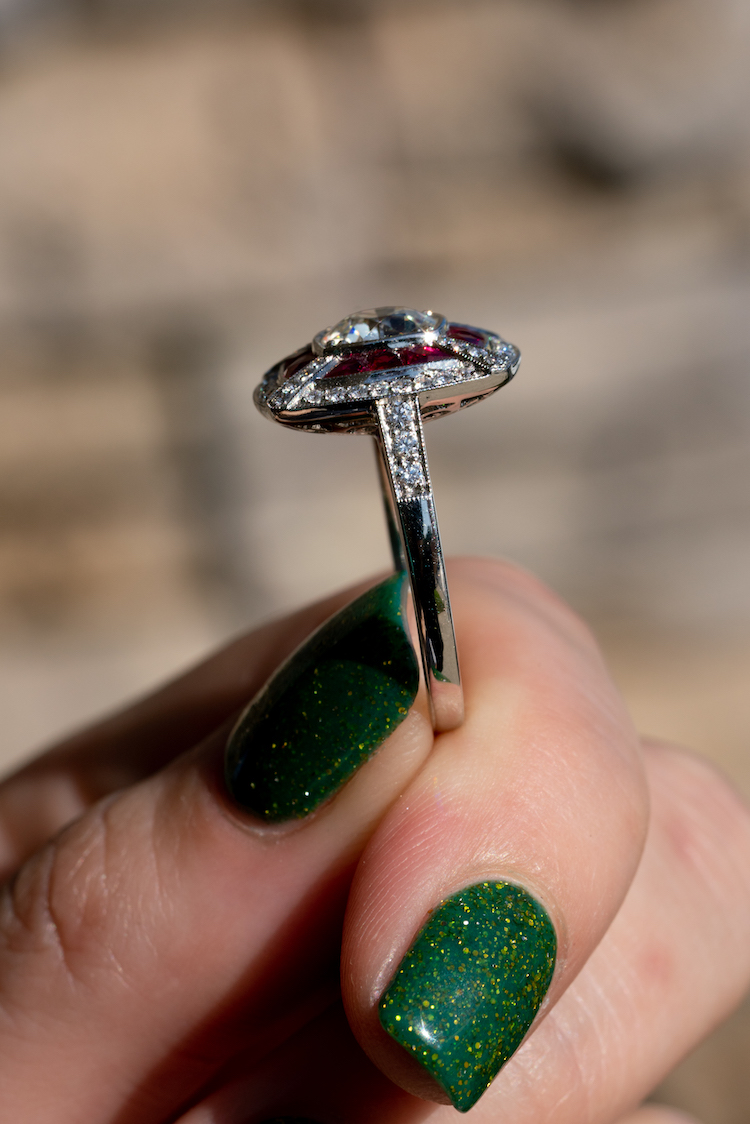
Unlike the ruby ring above, this is actually a diamond ring with ruby accents. It is also an Art Deco-style gemstone and diamond ring. During the Art Deco period, rubies and other precious gemstones were often used as accent stones to give rings a colorful appearance while also amplifying the geometric designs that the era is so well known for. This ring is a prime example of why Art Deco jewelry is the most sought after of all classic jewelry eras.
EMERALDS
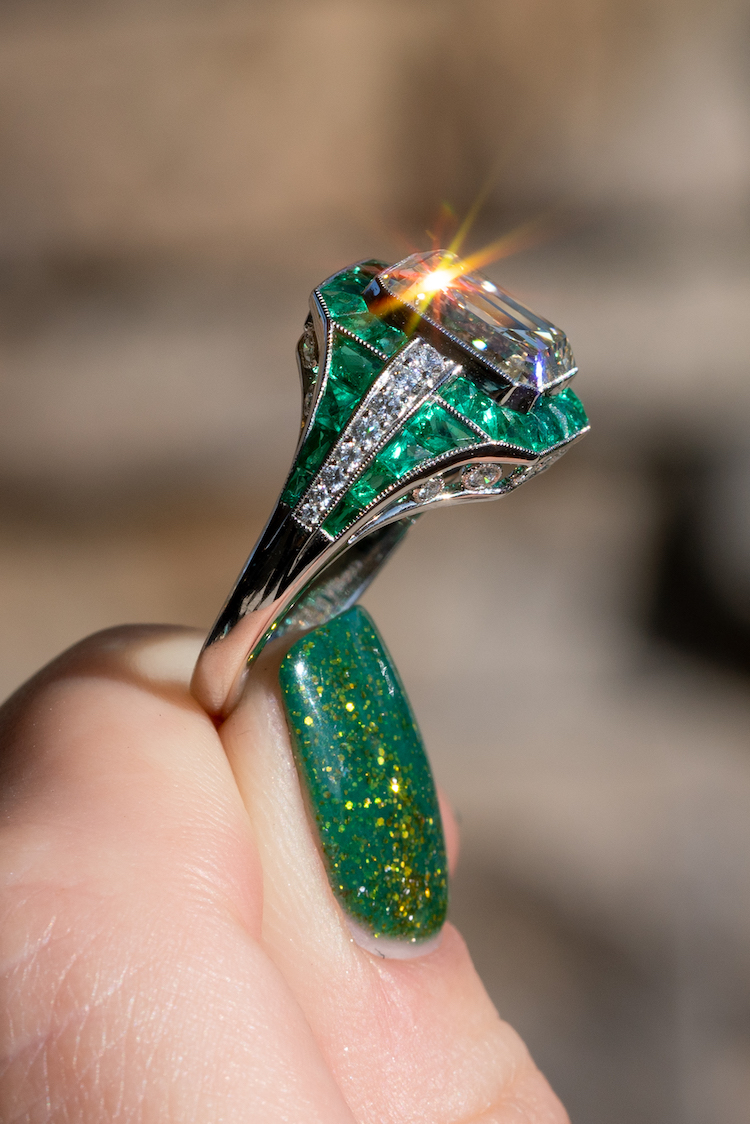
Emerald is a green precious gemstone. It is the most valuable and sought after green gemstone of them all. It is a variety of the mineral beryl, getting its green color from trace amounts of chromium and sometimes vanadium.
Emeralds come in various hues of green, from dark to light. Some may have a bluish green to them. The most desirable emeralds are very transparent. If you look closely at an emerald, you can see a matrix of hexagonal, prismatic crystals. As such, no natural emerald is free of inclusions. Thus, if it is, it is likely not a real emerald.
In terms of hardness, where sapphires and rubies have a 9 out of 10 on the Mohs Hardness Scale, emeralds have a 7.5-8 (diamonds are 10). Nevertheless, they are still very hard and durable, which makes them ideal for everyday wear.
To give you context, a steel knife has a 5.5 harness.
Where are Emeralds found?
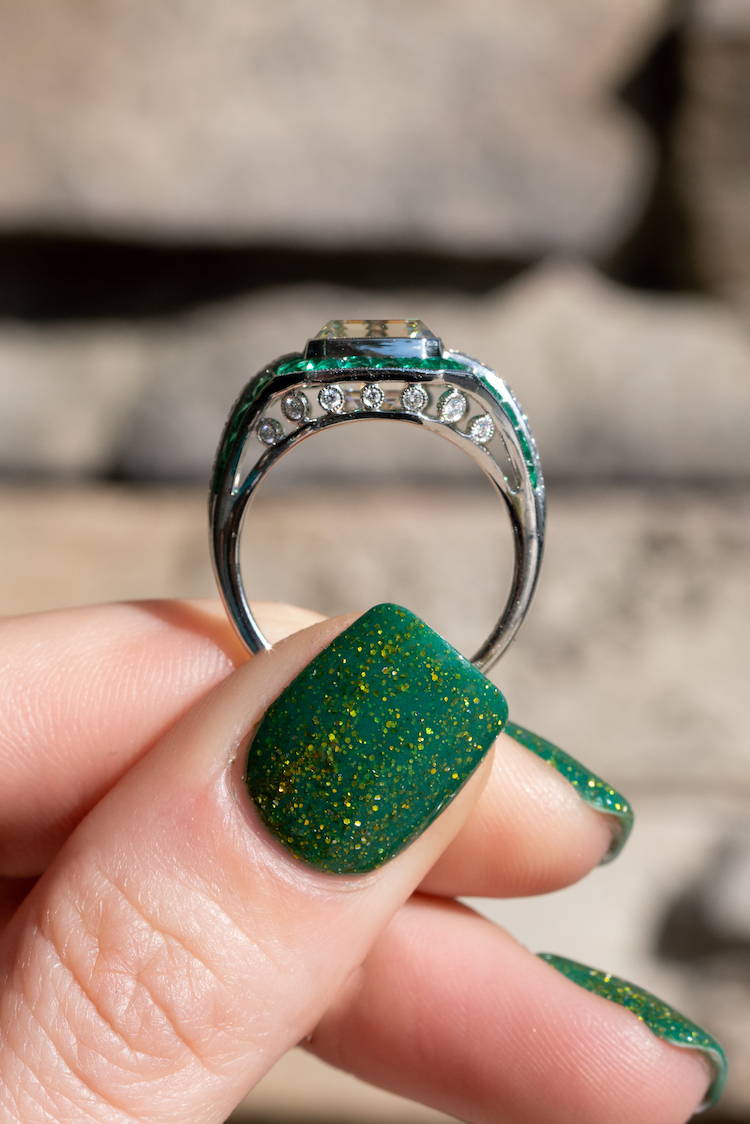
The major emerald deposits are mined in Colombia, Brazil and Zambia, although they can be found in other parts of the world, such as Pakistan, Afghanistan, Australia and even the USA.
Colombia is said to produce the finest, most exquisite emeralds.
Natural emeralds were formed hundreds of millions of years ago. Some emeralds are believed to be almost 3 billion years old. Emeralds form when 4 specific elements – beryllium, aluminum, silicon, and oxygen – flow with hot water through veins in the earth (hydrothermal veins). When the conditions are just right, these veins cool down and the emeralds crystals form.
Emerald History

Emeralds have a very long history like the other precious gemstones. In Ancient Greece and Rome, the emerald was said to be the gemstone of the goddess Venus, which meant it symbolized love and hope. On the other side of the world, the Incas held the emeralds in high ranking, believing it to be the source of eternal life. Egyptians had a similar belief. Cleopatra absolutely adored emeralds. They were here favorite gemstone.
Emerald lore is also famous throughout history for its power of foresight. People believed the emerald had mystical powers that bestowed the ability to see the future. It was also said to strengthen the mind and the memory.
Today, much of the ancient symbolism and spiritualness of the emerald remains strong. The emerald symbolizes growth, reflection, peace, and balance. It also represents fertility and healing. It is a favorite stone of spiritual people, as many report it truly gives them a feeling of all the aforementioned points. If anything but true, the emerald surely is one of earth’s most beautiful creations. This rare gemstone has an unparalleled green vividness and beauty, which is why it is so very valuable.
Emerald Value
As with any gemstone, it depends on the quality and size of the stone, as well as if the stone has been treated or not. Natural emeralds of gem-quality are 20 times rarer than diamonds. Because of this, they typically command a higher price.
In terms of investment grade emeralds, they are well above diamonds. However, investment grade rubies and sapphires are as well. That said, most jewelry doesn’t use investment grade gemstones.
Generally speaking, jewelry with natural deep green emeralds will cost the most. To give you an idea of what emerald rings cost, see the below example…
Emerald Rings with Diamond Side Stones
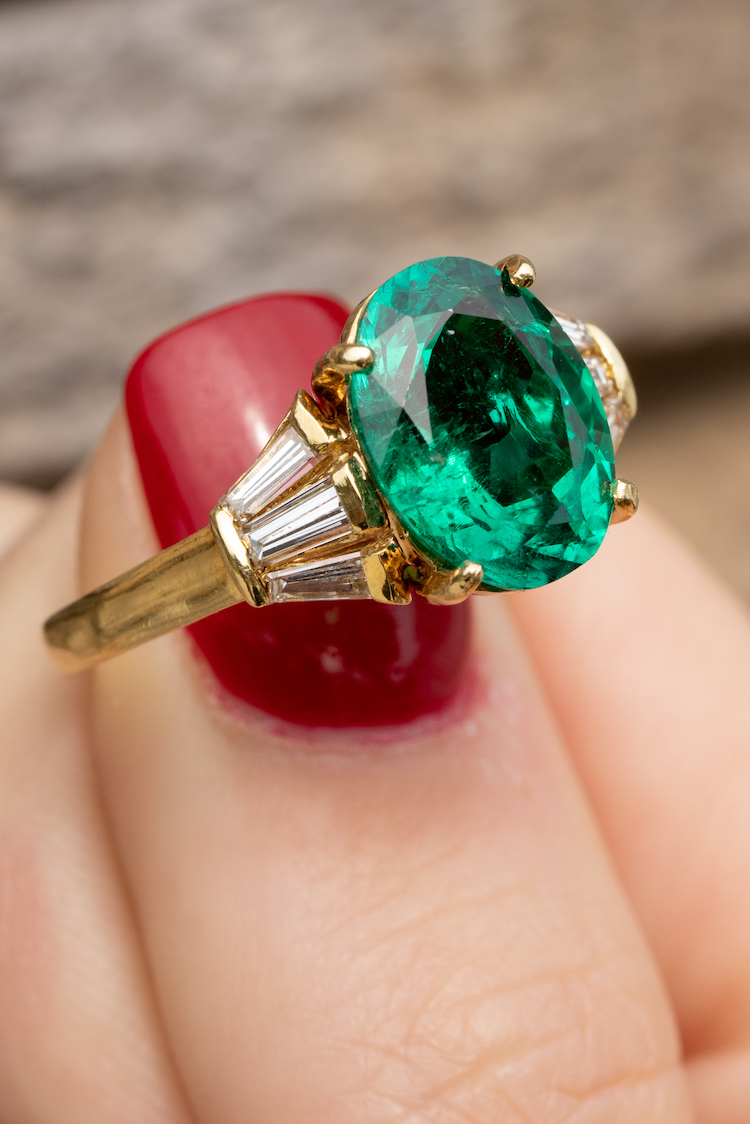
This is an 18k yellow gold ring with a 4.07 carat oval-cut emerald. It has baguette diamond side stones totaling to approximately .7 carats. This exquisite emerald ring costs $48,000.
Diamond Rings with Emerald Side Stones
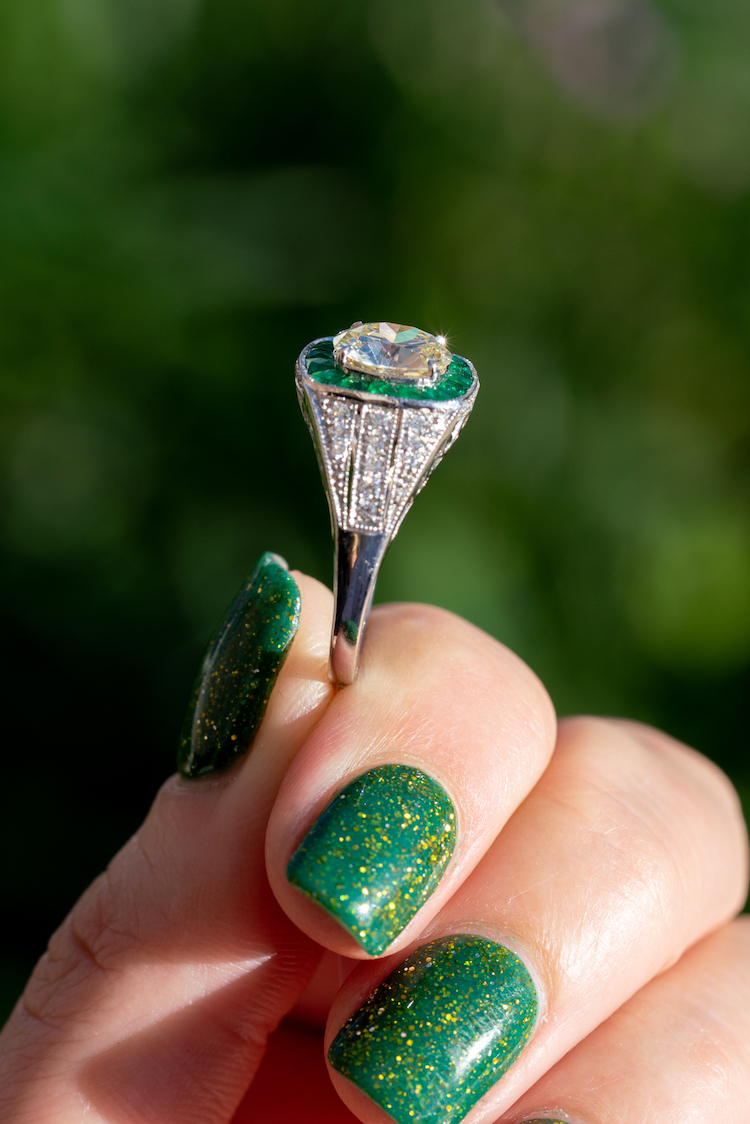
A diamond ring with emerald side stones is another fantastic option for emerald lovers. This ring has an ample amount of emerald side stones, providing that beautifully vivid green color that only emeralds can. The polarity of the diamonds with the emeralds only intensifies the breathtaking nature of the emeralds.
PRECIOUS GEMSTONE RINGS IN BOCA RATON
At Diamonds By Raymond Lee and Raymond Lee Jewelers in Boca Raton, we have a vast collection of exquisite gemstone rings. We have sapphire, ruby and emerald rings of various designs and motifs, each one-of-a-kind. From Art Deco-style and vintage-inspired to contemporary and minimalist, we have gemstone rings for everyone’s taste. Have a look at our collection’s of gemstone rings to see for yourself…
Precious Gemstone Rings at Diamonds By Raymond Lee
Precious Gemstone Rings at Raymond Lee Jewelers
